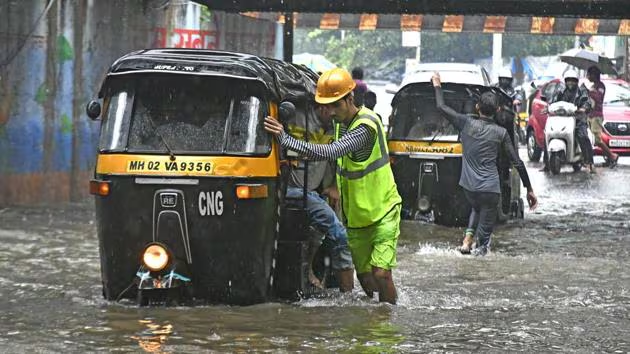The Brihanmumbai Municipal Corporation (BMC) is contemplating a Rs 600 crore investment to implement anti-flooding measures recommended by the Indian Institute of Technology Bombay (IIT-B). Despite the severity of the issue—evident by the subway’s closure over 30 times this season—the civic body has yet to commit to the costly solution, raising concerns about the project’s financial viability. The Andheri subway, a vital link for commuters, has long struggled with waterlogging issues, being located near the Mogra nullah.
Last year alone, the subway was shut down 21 times due to heavy rains. While BMC has successfully mitigated flooding in areas such as Hindmata, Gandhi Market, and Milan subway using water storage tanks, enhanced drainage systems, and high-capacity pumps, the same level of success has eluded the Andheri subway. A proposal for the construction of a larger drainage system and a holding tank was submitted to BMC’s top brass, with input from IIT-B and project consultants. However, officials remain divided on the cost-effectiveness of the plan. “The Railways has granted a no-objection certificate, and our officials have inspected the site, but the Rs 600 crore budget remains a sticking point,” a senior BMC official revealed. A final decision is expected in two weeks.
Andheri West MLA Ameet Satam has pushed for lower-cost alternatives, submitting a proposal to the BMC in August 2024. His suggestions include constructing a rainwater holding pond similar to that at Milan subway and creating rainwater harvesting pits. Reducing sewage inflow into stormwater drains and widening the Mogra nullah are also on the table, but encroachments and space constraints pose significant challenges. Currently, the BMC has initiated a Rs 150 crore project to widen drainage lines in Andheri West, expected to take three years to complete. However, even with these improvements, there are concerns that they may not fully prevent future subway closures. As the monsoons wreak havoc on Mumbai’s infrastructure year after year, the debate over whether to invest a substantial sum in permanent solutions at Andheri subway underscores the broader challenge of balancing financial constraints with civic improvement.
With residents and commuters consistently impacted, the BMC must weigh the immediate relief from short-term measures against the long-term benefits of a comprehensive flood prevention system. The Andheri subway’s persistent flooding has a significant human impact, disrupting the daily commute of thousands of Mumbaikars. On multiple occasions, commuters were forced to rely on alternate routes like Gokhale bridge, leading to traffic congestion and delays. In the broader context of Mumbai’s monsoon challenges, the BMC’s indecision has sparked concern among residents who are wary of another prolonged wait for a solution. The frequency of flooding in Andheri subway has worsened over the years, with the number of closures jumping from 21 last year to over 30 this season, reflecting an increase in the intensity of monsoon storms.
This reality has left the civic body grappling with how best to allocate resources—whether to commit to a high-cost, long-term solution, or pursue smaller, more immediate fixes. Residents and local leaders continue to advocate for solutions that will offer lasting relief from the ongoing disruption. However, the financial constraints and the challenges posed by the city’s ageing infrastructure complicate the decision-making process for the BMC.



